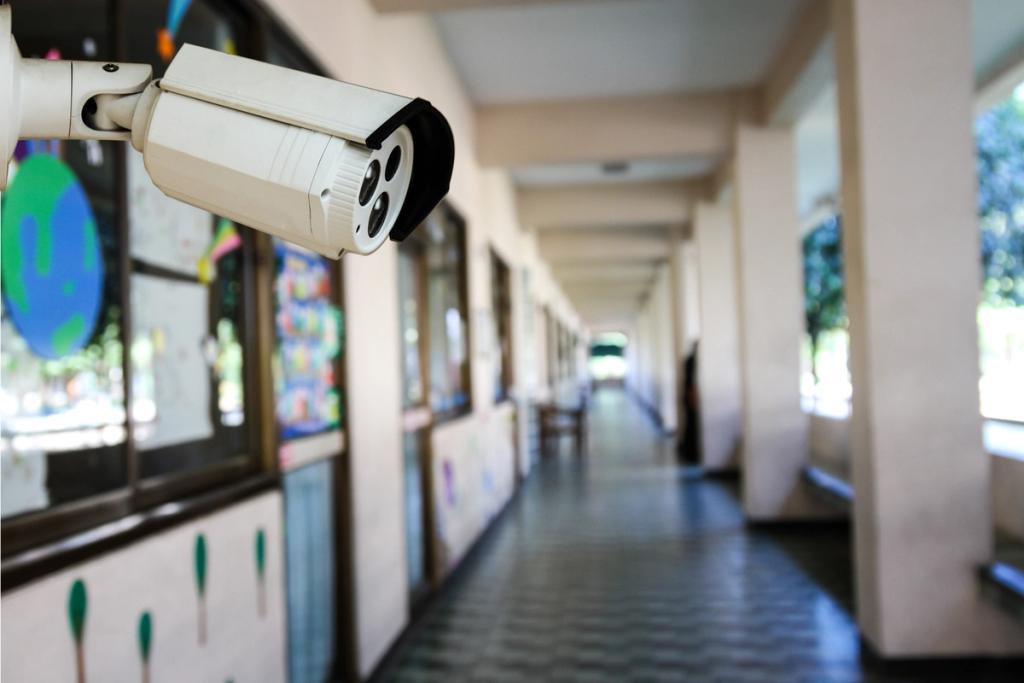
Company Blog
Tech-Forward Education: Mitigating School Safety Challenges
In an era marked by technological advancements, schools are increasingly turning to innovative solutions to address a myriad of safety concerns. From traditional threats like violence and bullying to emerging challenges such as cybersecurity and mental health issues, educational institutions are leveraging technology to create safer and more secure environments for students, staff, and the community.
In an era marked by technological advancements, schools are increasingly turning to innovative solutions to address a myriad of safety concerns. From traditional threats like violence and bullying to emerging challenges such as cybersecurity and mental health issues, educational institutions are leveraging technology to create safer and more secure environments for students, staff, and the community.
1. Security Systems: Enhancing Physical Safety
One of the most visible ways technology contributes to school safety is through the implementation of advanced security systems. Surveillance cameras equipped with high-resolution imaging can monitor school premises, acting as a deterrent to potential threats and providing valuable evidence in the event of incidents. Additionally, access control systems that rely on electronic measures like key cards or biometric identification help restrict entry to authorized personnel and fortify physical security.
2. Cybersecurity: Safeguarding the Digital Realm
As the education sector embraces digital tools and online platforms, the need for robust cybersecurity measures has become paramount. Schools can deploy firewalls, antivirus software, and intrusion detection systems to protect against cyber threats. These measures not only safeguard sensitive data but also create a secure environment for students to engage with educational technology without the risk of falling victim to online threats.
3. Emergency Preparedness: Timely Communication in Critical Situations
In times of emergencies, quick and effective communication is crucial. Automated alert systems powered by technology can disseminate information rapidly to students, staff, and parents. Whether it’s a natural disaster, a lockdown situation, or any unforeseen circumstance, these systems ensure that critical information reaches the school community promptly, allowing for timely responses that can remedy the situation.
4. Mental Health: A Tech-Infused Approach to Well-being
The mental health of students is an increasingly recognized concern in educational settings. Technology provides a range of tools to address these issues. Mobile apps and online platforms offer access to mental health resources, counseling services, and self-help tools. By leveraging technology, schools can create a supportive environment that promotes the well-being of students and provides them with resources to navigate the challenges of adolescence.
Furthermore, monitoring tools powered by educational technology can analyze digital behavior data to identify signs of distress in students. This proactive approach enables schools to intervene early, offering timely support to those who may be struggling with mental health issues.
5. Social Media Monitoring: Tackling Online Challenges
While social media platforms offer avenues for communication and community-building, they also present challenges such as cyberbullying and the spread of misinformation. Schools can employ monitoring tools to keep a vigilant eye on social media activities, identifying and addressing potential issues before they escalate. This technology-driven approach helps maintain a positive online environment and reinforces the school’s commitment to the well-being of its students.
6. Digital Inclusion: Enabling Equity through Tech
Establishing digital equity in schools is crucial for combating discrimination and bias. Technology in education can significantly contribute to bridging the digital divide by providing connectivity and accessibility to students and staff without devices or internet access. In doing so, technology becomes a catalyst for fostering a culture of fairness, inclusivity, and understanding within the school community.
7. Substance Abuse Prevention: Educational Technology as a Catalyst
Technology can also play a role in preventing substance abuse by providing educational resources and support. Educational apps can offer information about the dangers of substance abuse, as well as connect students with support services. By leveraging technology, schools can proactively address this concern and contribute to the overall well-being of their students.
8. Training Simulations: Virtual Reality for Real-World Preparedness
Virtual Reality (VR) and simulation technologies have emerged as powerful tools for training and preparedness. In the context of school safety, these technologies can be used for emergency response training. Staff and students can engage in virtual simulations that replicate various emergency scenarios, allowing them to practice responses in a realistic but safe environment. This hands-on approach enhances preparedness and equips individuals with the skills needed to navigate emergency situations effectively.
In conclusion, the integration of technology in schools goes beyond enhancing educational experiences; it also plays a pivotal role in addressing and mitigating safety concerns. From physical security to mental health support, technology offers a versatile toolkit for creating a safer and more inclusive educational environment. As schools continue to embrace technological advancements, the synergy between education and technology holds the promise of fostering a safer and more secure future for all students.
To download a printable PDF, click here.
- - -
About Premier Wireless
Premier Wireless Business Technology Solutions specializes in technology that enables safety, innovation, communication, and transformation. Premier’s school safety solutions provide peace of mind for students, parents, and staff, ensuring schools in your district are safe and productive learning environments for all students.
For more information about Premier Wireless, visit www.premierwireless.com.